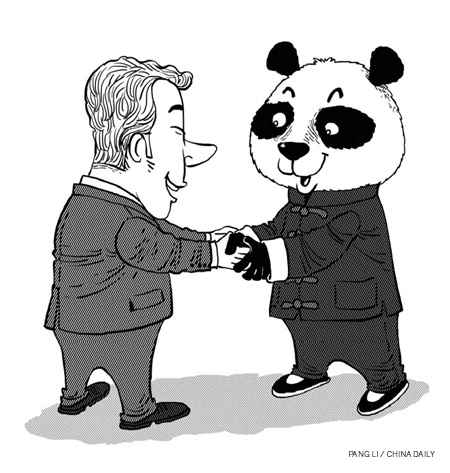International Ties
Adding Asian color to public diplomacy
By Parama Sinha Palit (China Daily)
Updated: 2011-03-08 08:02
 |
Large Medium Small |
On March 7, Foreign Minister Yang Jiechi delivered a speech at the annual session of National People's Congress, highlighting the achievements of China's diplomacy. However, China's public diplomacy, which was not mentioned by Yang, deserves applause, too.
Public diplomacy, which many consider a major foreign policy tool, has drawn a lot of attention from Western countries, particularly the United States. It helped the US become a globally "attractive" power after World War I. US public diplomacy has successfully communicated the American way of life to people outside that country. It has helped the US, and other Western powers following similar policies, to connect with and influence the rest of the world.
But the attacks on the US on Sept 11, 2001, raised serious doubts about the effectiveness of Western public diplomacy and forced the US and other Western powers to revisit these policies.
While the West is trying hard to improve its "damaged" image after 9/11, China and India are increasingly taking to public diplomacy. Their eagerness to apply public diplomacy is mainly to connect closely with other countries in the era of globalization and to realize the gains that can arise from such connections.
Compass and papermaking that China invented, and India's invention of "zero" have made great contributions to civilizations over the centuries. Since both countries, for obvious reasons, were looked up to with awe by the rest of the world, they never felt the need to consciously impress others with their virtues.
But with international relations changing rapidly and China and India becoming targets of negative propaganda, both countries have realized the importance of projecting their true images to the rest of the world. The two countries have begun constructively engaging people and institutions overseas for the purpose and are keen on using specific policies because the modern world requires publicizing and highlighting achievements.
While India's public diplomacy is yet to acquire a focused and distinct shape, China's efforts have been more noteworthy. An opinion poll conducted in 2008 in 22 major countries, including many of China's neighbors, showed people in most of them viewed it positively. China's gonggong waijiao or public diplomacy involves an array of activities to "win hearts and minds".
Many in the West are surprised to see China practising gongong waijiao to portray itself as a responsible and honest power, but it is a conscious move by Beijing. That China wants to advance public diplomacy is evident from the establishment of a public diplomacy research center in the country in August 2010. Be it the Beijing 2008 Olympic Games, Shanghai 2010 World Expo, or the large number of Confucius Institutes it has set up in other countries, China is keen on establishing itself through not only its economic and strategic development, but also Chinese culture and values.
Public diplomacy cannot be successful without a domestic makeover. China realizes this more than India. Chinese Foreign Ministry has been holding regular open days and Lanting Forums on foreign affairs, the first of which was attended by more than 70 foreign diplomats, Chinese and foreign journalists, and experts and scholars. "Lanting" means blue hall in Chinese. The color of the sky and oceans is meant to symbolize China's inclusiveness, passion and vitality, and represents the philosophy of harmonious coexistence, openness and win-win progress.
In this respect, Premier Wen Jiabao's interaction with schoolchildren in New Delhi during his visit to India last year and his references to Rabindranath Tagore - India's celebrated poet and Nobel laureate who is regarded highly in China, too - evoked a positive response from all around. India's inclination to learn more about China is clear from the introduction of Chinese as a language at the high-school level.
The West, too, is becoming more receptive to Chinese culture and values. Before President Hu Jintao's visit to the United States earlier this year, a promotional video was shown at Times Square to change Americans' perception about the Chinese way of life. The Chinese leadership has also been issuing advertisements in leading Western newspapers to explain China's position on key issues.
While China's proactive public diplomacy has captured global attention and begun showing results, India's relatively low-profile efforts are yet to make a similar impression. India's culture and civilization are huge assets, which it should use to recharge its positive image in the international community. A proactive public diplomacy policy will have two results. First, it will highlight India's national and cultural virtues. Second, in conjunction with Chinese efforts, it will give the concept and application of public diplomacy a strong Asian orientation.
Given Asia's history and culture, this is a recognition that the continent, especially China and India richly deserve.
The author, based in Singapore, is a specialist on foreign policy and international relations.

| 分享按钮 |